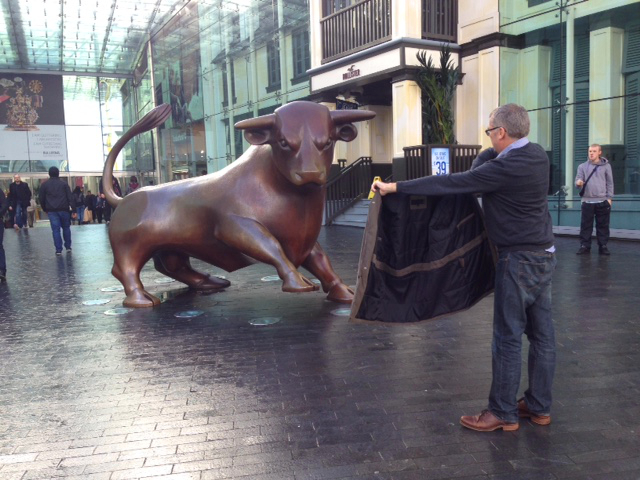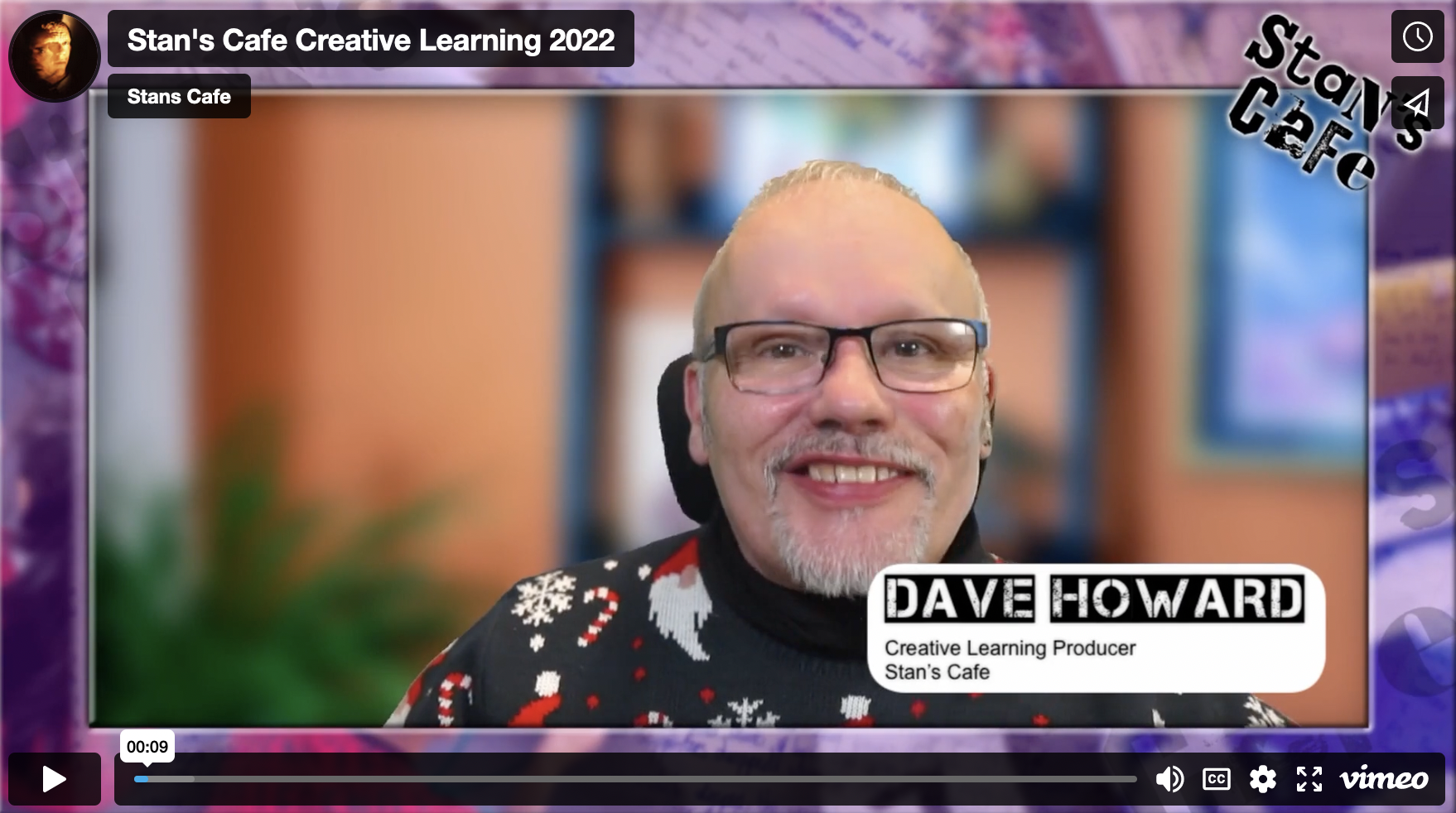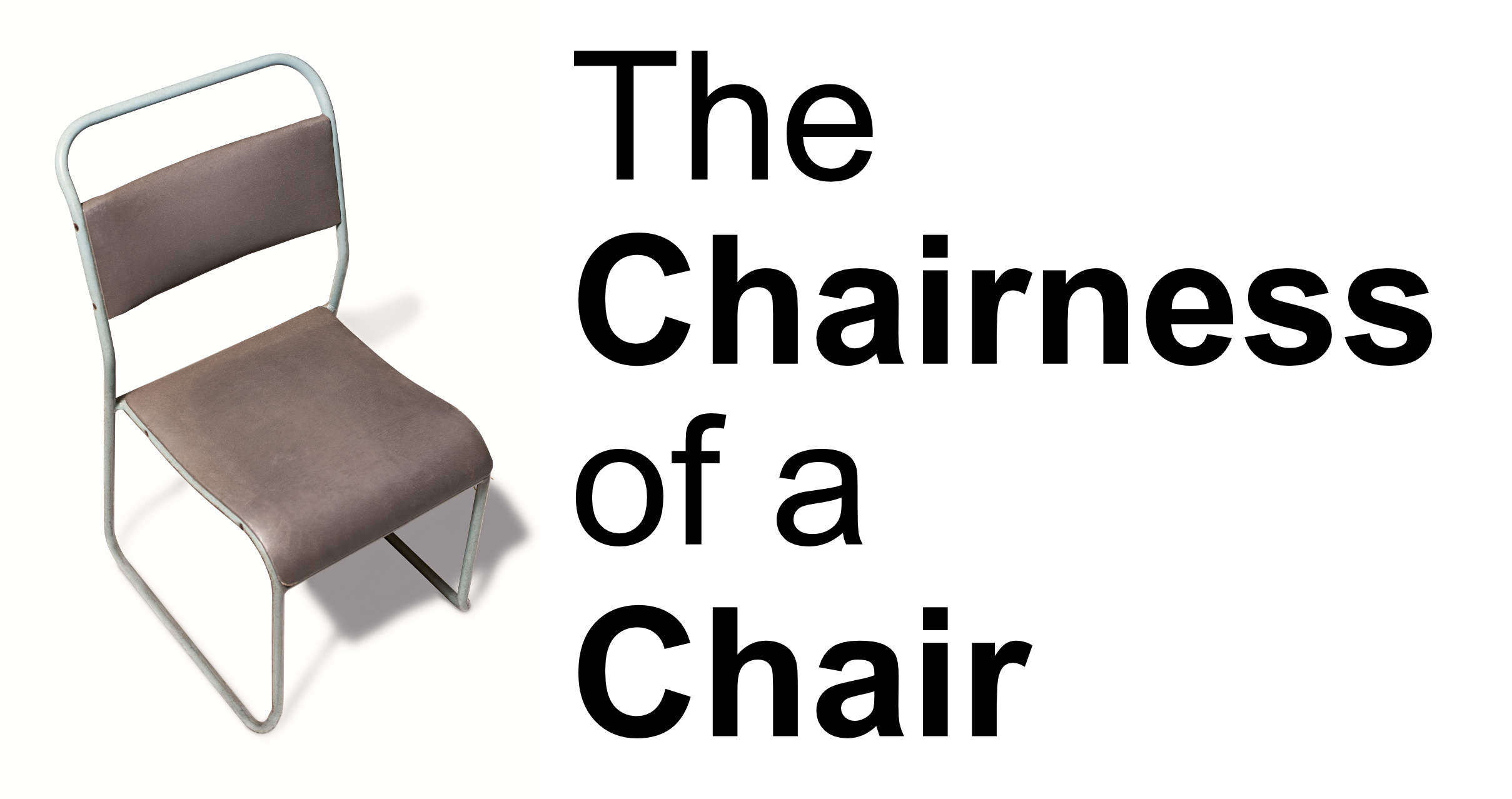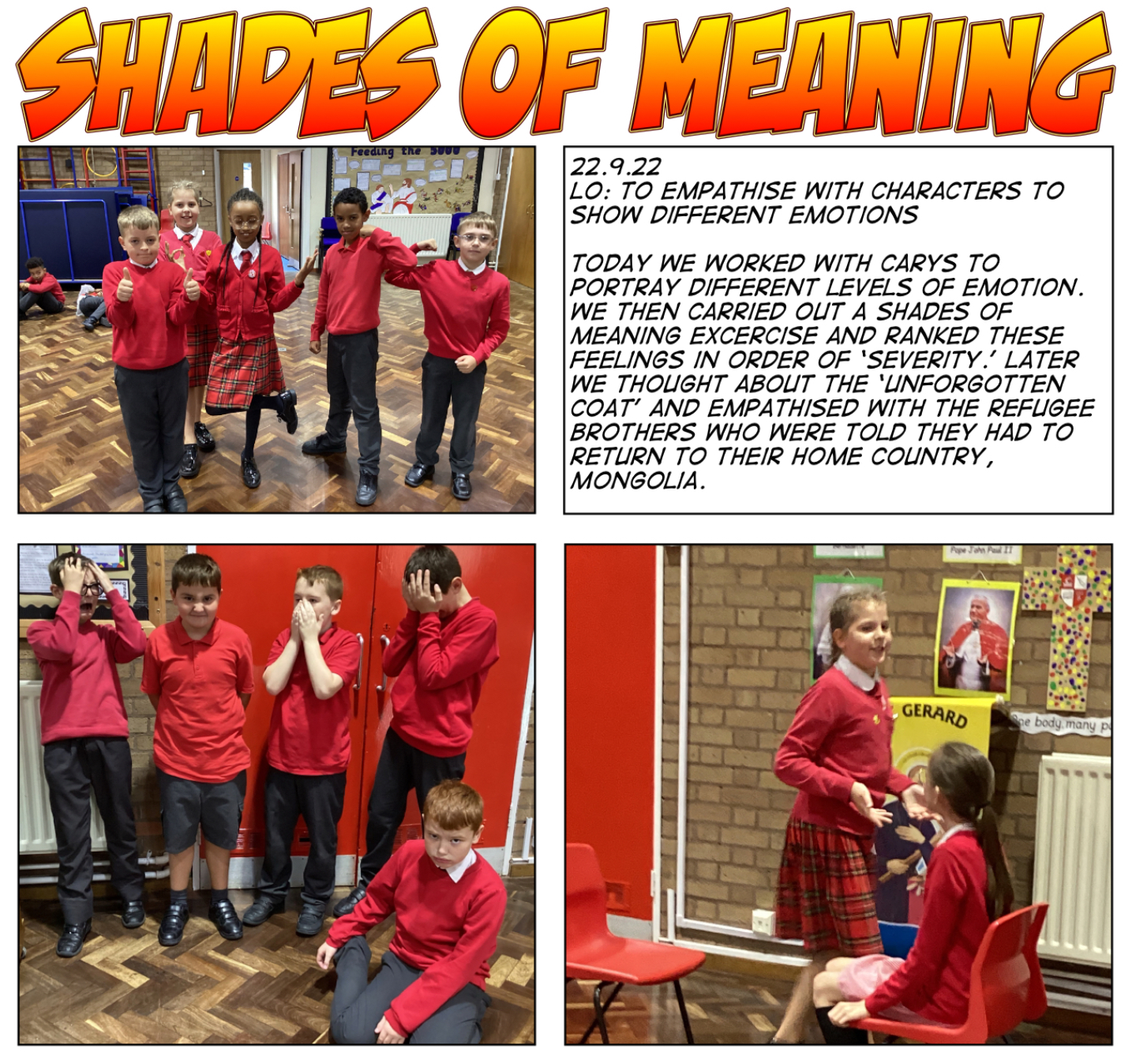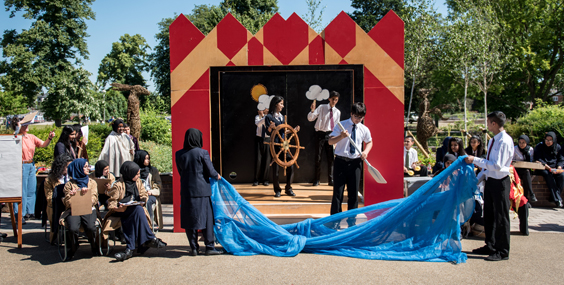Year 4 have just made and performed Birmingham Blitz, a theatre show about World War 2 with an eye to local history, involving some design technology skills and a bit of songwriting. The show came as a culmination of just one of the projects we are wroking on as part of the Elliott Foundation Creative Collaboratives programme.




Each Tuesday of Spring 1 I worked with Dolphins 9 – 11 and then Lions 1:15 – 3:15 in their classrooms. We learned some of the causes of World War 2; why certain cities, including Birmingham, were bombed; we learned about bomb shelters and evacuations; we learned why the war turned against Germany and the long-term impact of the war on the UK and the wider world.
Each lesson involved learning (and revising) some history, then we worked together making a theatre performance to show an audience some of what we had learned. Some scenes – such as those focusing on the air-raid wardens, evacuees at the station and work at the Castle Bromwich Spitfire factory were solely action, without words. Other scenes saw us breaking into small groups, choosing story moments we thought were important and making scenes to address these with words too. We wrote in our groups and together as a class. I tidied up their scripts a little and the students memorised their lines.
For scenes which involved air-raids students used their Design Technology lessons to design, refine and then construct model houses and planes.
For the show’s finalé we split into table groups. Each group researched significant events from a different decade between the end of World War 2 in 1945 and the present day. We used our disciveries to create a timeline linking the end of the war with now.
Towards the end of rehearsals the musician Katy Rose-Bennett came into school and each class wrote a song with her. Both classes learned and sang both songs in the show. The second of these songs – This City Is Not Safe – was particularly poignant as we concluded our timeline with the War in Ukraine and noted a number of similarities between that conflict and World War Two; these similarities included the plight of refugees.
Our project concluded on the Tuesday before half term. We rehearsed in the school hall, and in the afternoon performed to Years 2 and 3 with a couple of Stan’s Cafe’s theatre lights, a nicely layered soundtrack over the school’s speakers and photographs we’d used for our learning in lessons projected behind the actors.
The dress rehearsal was a bit shakey but everyone focused very hard and pulled off a lovely performance. Everyone took part, everyone said at least one line; some people said lots. Everyone had fun, even the people who thought they wouldn’t. Everyone contribute, including some people who had been very shy before we started.
What Went Well.
Students learnt a lot of history, they willingly did a lot of good writing (including a song), built their confidence, worked well together, and couldn’t wait for our next lesson together.
Even Better If… I’d been smarter and put more energy into learning more of the students’ names – there were 60 of them, but if I had a better strategy and been braver I think I could have done this and it would have made the project more powerful.
Having more time in the hall would have been helpful – but that place is in high demand!
Reflection
Key to success in this project was the clarity of its focus and the communication I had with the two class teachers. They shared their History Curriculum with me so I could deliver and build on it I shared my plans and together we tweaked them. We taught collaboratively. I brought the theatre and the teachers brought their knowledge of and relationship with their students. I think we worked well together.
James Yarker 17th February, 2023

